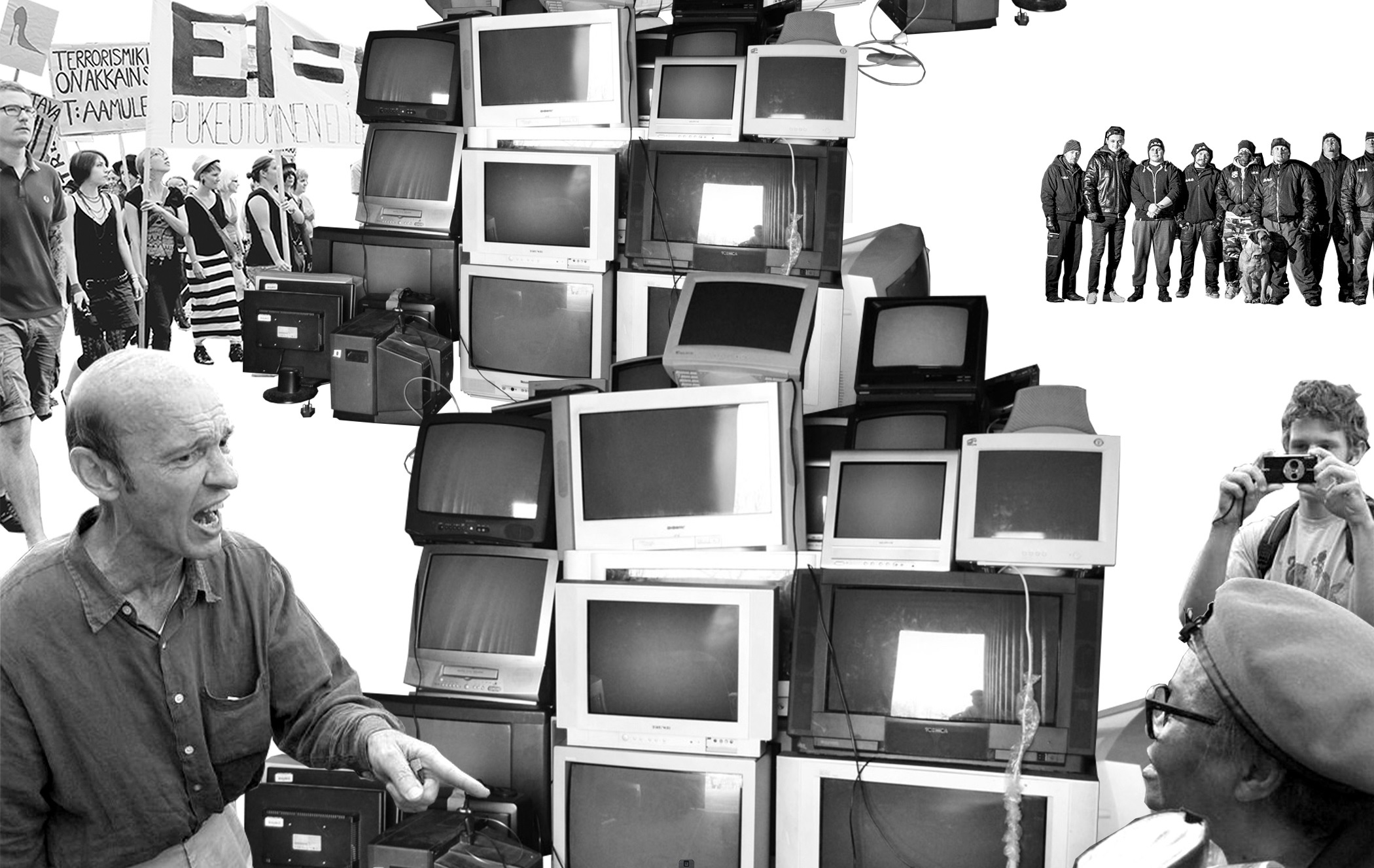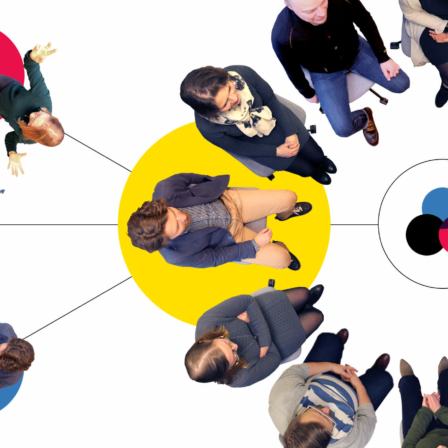Dutch theoretician, reporter and philosopher Bart Brandsma’s model describes the dynamics of polarisation as a phenomenon, and how polarisation can be controlled.
Based on his model, this article reveals the main rules behind the logic of polarisation, the five roles people typically take, and the four necessary changes required for depolarisation through dialogue.
As a phenomenon, polarisation resembles conflict. However, polarisation differs from conflict in that, unlike polarisation, conflict has identifiable parties and events with a specific time and place. In other words, conflict has its owners: people who take part – or choose to avoid it. The dynamics of polarisation resemble a situation called frozen conflict, in which nothing happens but there is tension under the surface.
The three main rules of polarisation
As a phenomenon, polarisation is more abstract than conflict, hiding under layers of tension. It functions according to three main rules:
- Polarisation is a thought pattern – us and them. This pattern is in itself neutral and present everywhere. It becomes problematic when it is overly emphasised. The thought pattern becomes black and white and absolute.
- In order to develop, polarisation needs fuel. Identity speech functions as a fuel: people use speech to define a specific group’s identity. This is done by repeating phrases, such as “They always do that”, “They are like that…”, “They never…”. For instance, discussion for and against immigrants is very ethnocentric and two-parted: as if there was a unified group “immigrants” and “mainstream population”. The existence of such groups is strengthened by dividing people between the two, and defining people based on the group they belong to.
- Polarisation has the dynamics of an instinctive emotional reaction. In other words, you cannot affect the development of polarisation with facts – it is all about what things feel like.
Identity speech fuels polarisation
Polarisation and conflicts need each other. A conflict can generate a polarising pattern of thought – and the pattern of thought can provide a framework for interpreting conflicts. Conflicts, and especially interpretations blaming identity as a source of conflict, provide fuel for polarisation. Polarisation, or in other words, dichotomy and group separation, provides a fruitful soil for conflict.
Five roles affecting polarisation
- The pushers try to instigate polarisation by using hate speech and tarnishing and blaming the other group.
- The joiners have chosen sides, and they feel that it is right, necessary and justified. They often express a certain reservation, a so-called disclaimer statement about the pushers’ speech, and are mostly not as strict as the pushers.
- The silent majorityare a group of people standing in the middle ground. Belonging to this group does not reveal anything about the person’s thoughts or motives, as the group consists of very different people. In the middle are the indifferent, the very committed and people remaining in the middle on purpose, who have nuanced views. Moreover, professionals and authorities should be in this group, as they should be easily approachable for all population groups.
- The bridge builder’s role is often adopted when one feels the need to affect the opposing poles’ way of tarnishing the other population group and revoke claims based on prejudice. The bridge builder wants to solve the conflicts between the two groups, and explain the state of things to both groups. Despite their goodwill, bridge builders tend to unintentionally strengthen polarisation by producing hate speech, which functions as fuel. Despite trying to revoke claims behind the pushers’ hate speech, they strengthen the concept that there are two separate population groups which define their members – no matter if the definition is negative or positive.
- The scapegoat’srole is given to people when polarisation has reached an advanced stage. When the situation escalates, the number of silent ones in the middle decreases. In such a situation, it is impossible not to take sides. The scapegoat’s role is often given to bridge builders, or people that pick their side last and are regarded as naive. The pushers also place authorities in the position of scapegoats, as “they are not doing anything”.
Pushers want visibility
Polarisation develops when it is growingly difficult to stay in the middle. The stage and tension of polarisation can be measured by assessing how well the ones in the middle are being tolerated. The ones in the middle are called naive, and they feel that they have to pick sides. The pushers’ main interest is visibility, which is an essential part of the development of polarisation. When polarisation and the pushers gain visibility, most people choose their side, and the pushers move even closer to the extreme. The phenomenon becomes self-affirming when opinions have to become even more extreme in order to gain visibility. The pushers get pushed even further.
Four necessary changes for controlling polarisation
Brandsma’s polarisation model is intended for recognising the phenomenon of polarisation in order to control it. Few people want polarisation to advance, but many affect its progress. The dynamics involve a lot of unintentional action; for this reason, it is important to acknowledge how the phenomenon works and how you can affect it with your own actions. The framework can be used for analysing situations.
Polarisation can be tackled after the phenomenon has been recognised
The dismantling of polarisation takes place through dialogue. The dialogue should take place with the right people on the right topics, with the right attitude and the correct tone.
Brandsma’s model for controlling polarisation uses the tools of mediation and conflict management. It is worth noticing that the situation analysis of polarisation differs from conflict. Conflict management starts off from mapping out the needs and interests of the opposing sides, whereas in polarisation, the opposing parties are not obvious.
It is worth identifying the following in the situation analysis of polarisation:
- the people involved
- their roles and interests
- their effect and
- “the general opinion/concern”
These factors are very variable. In order to have a discussion, you have to find out who the key persons are, what their roles are in their own communities, and what their stature is based on. Since the black and white us and them-thinking is at the core of polarisation, it is essential to be critical of people who feel that they represent a whole group of people.
Polarisation can be tackled after the phenomenon has been recognised Controlling polarisation is one of the most burning questions in today’s society, as through it, we can promote sound population relationships, safety and societal peace.




















Tools for a dialogue
Read more.